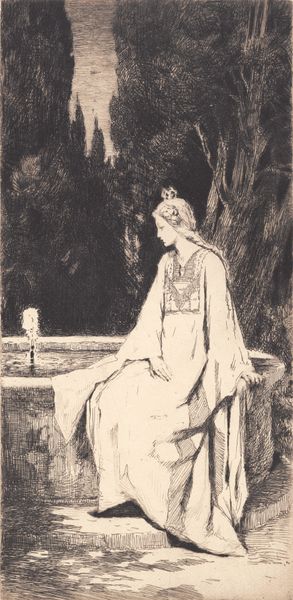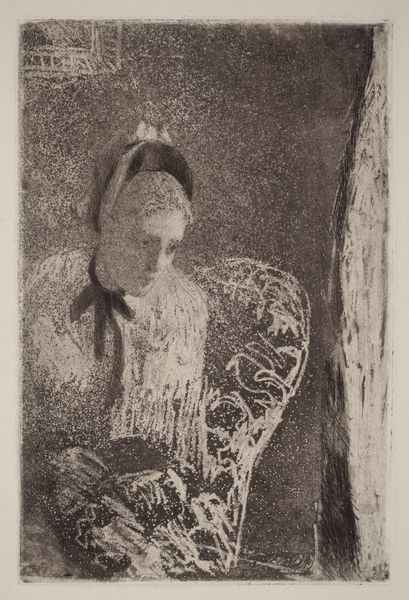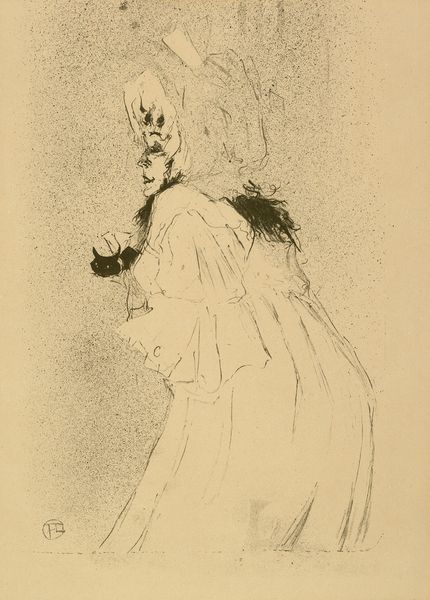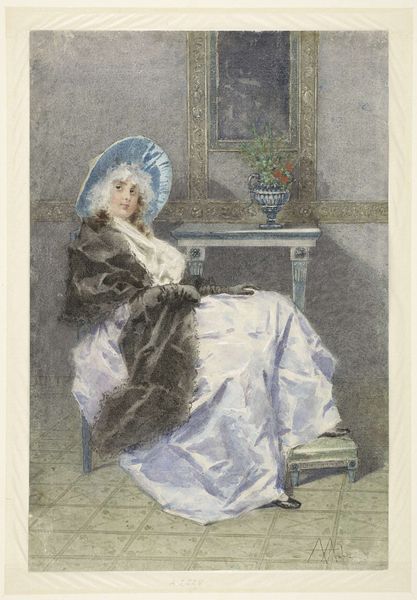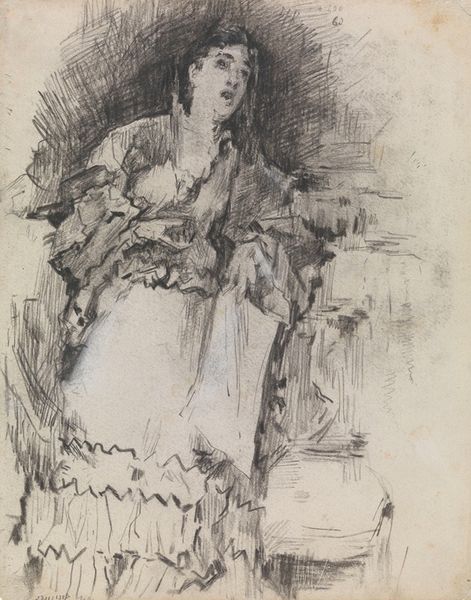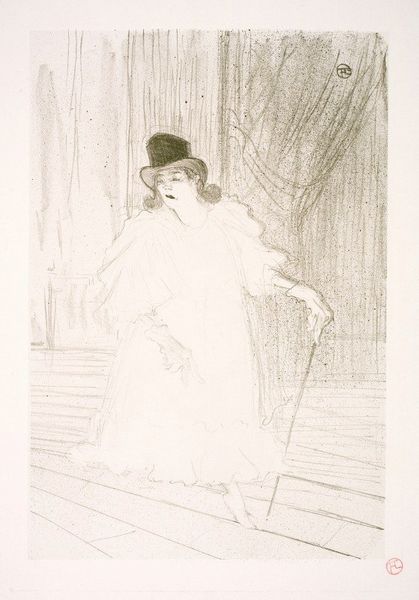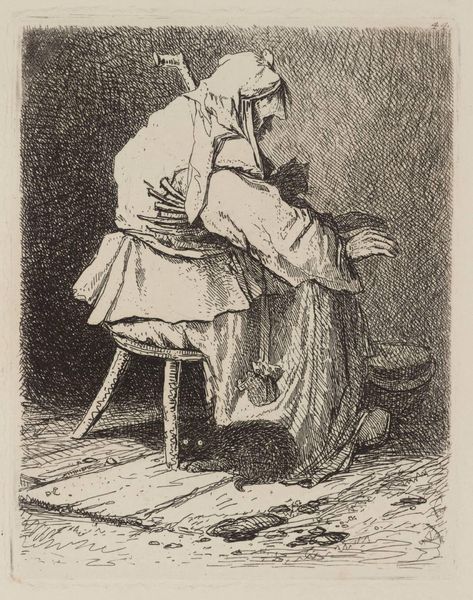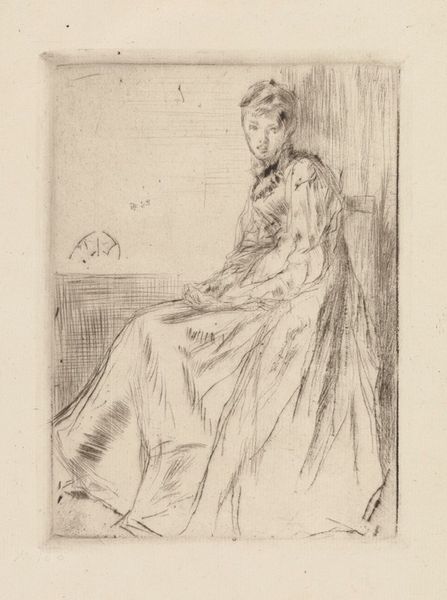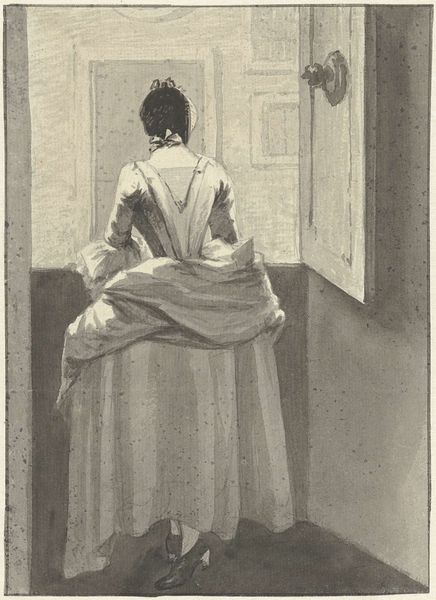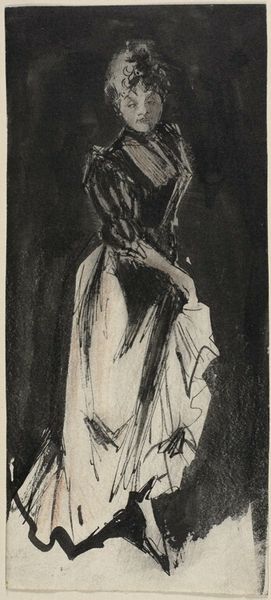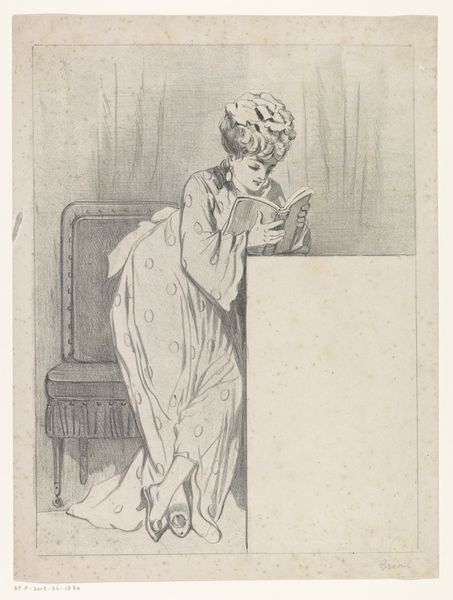
drawing, print, etching
#
portrait
#
drawing
# print
#
etching
#
landscape
#
pencil drawing
#
symbolism
Dimensions: 260 mm (height) x 130 mm (width) (plademaal)
Frans Schwartz created this etching, Prinsessen ved springvandet, a title which translates to The Princess by the Fountain. As an etching, the artwork depends on the material interaction between metal and acid. The artist would have covered a metal plate with a waxy, acid-resistant substance, and then scratched an image into that coating, exposing the metal. Next, the plate was submerged in acid, which bit into the exposed lines, creating grooves. Ink was then applied to the plate, filling the grooves, and the surface was wiped clean. Finally, the image was transferred to paper under great pressure. Look closely, and you can see how this process results in a distinctive, slightly rough line quality. The hatching and cross-hatching, the buildup of these etched lines, creates the tonal variations and the overall mood of quiet contemplation. In Schwartz’s era, etching was often seen as a democratic medium, because it allowed for the relatively easy reproduction of images, and so brought art to a wider public. It is a reminder that the value of art lies not just in the image it presents, but in the means of its making, and its circulation.
Comments
No comments
Be the first to comment and join the conversation on the ultimate creative platform.
